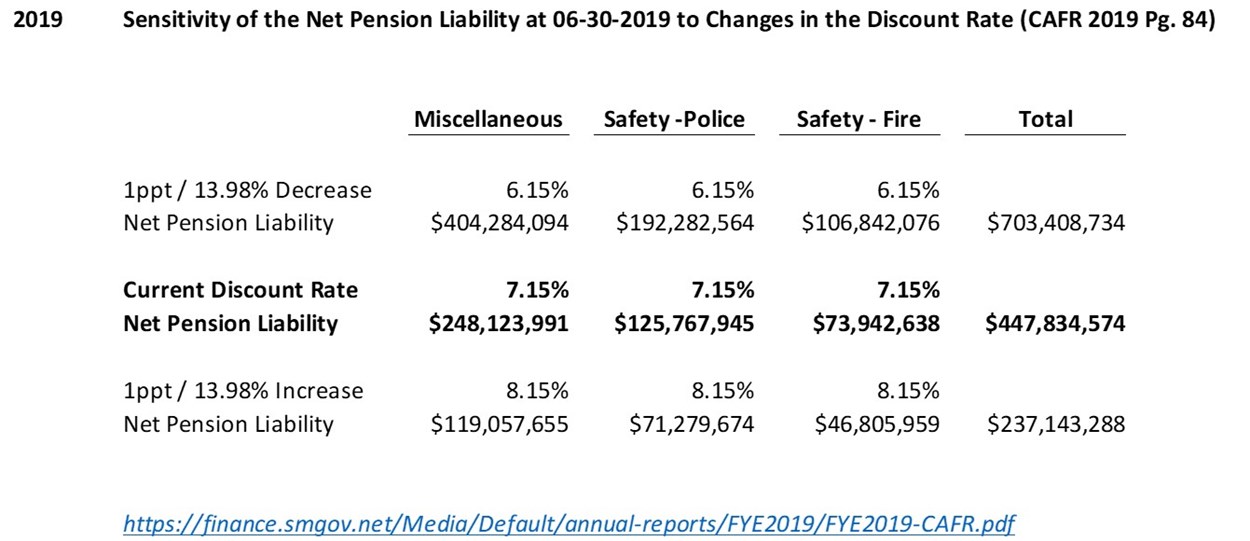
Finance - Let's Have Some Self-Control as We Rebirth!
A friend of mine talked to our mayor the other day. The mayor noted that we need more revenue, which is why we need to approve the mega “Plaza” project.
Interestingly, even using the current “crisis” revenue budget $5,832 per capita ($538M total), Santa Monica would still rank #23 (in the top 5%) of all California Cities (of which there are 483) on a pre-Covid 2018 per capital revenue basis. Santa Monica’s “crisis” per capita revenue is 50% higher than the City of Los Angeles’s 2018 pre-Covid revenue per capita of $3,899. It’s higher than the pre-Covid per capita revenues of Torrance, Culver City, Long Beach, Manhattan Beach and Newport Beach. And, Torrance, Culver City and Long Beach have comparable bus services as well. Finally, the $538M “crisis” budget is only 4% ($25M) below the full FYE 2013 actual revenues.
Santa Monica does not have a revenue problem. It has a cost control problem. And those inflated costs are still not solving our problems! Moreover, when crisis does hit, the first thing to go are the critical resident touch points.
When costs are not adequately controlled, no amount of revenue is ever enough. And, in a small city such as ours, the endless push for revenue growth relies on a tourist industry that places disproportionate strains on all city services, leading to more cost increases. More importantly, they drive the relentless and irreversible ebbing of our small beach town quality of life.
Like every household, we have to live within our current revenue stream. We are still facing huge financial challenges. If revenues recover, that excess over the “crisis” level needs to address our structural issues such as pension costs. We need to assume that our “crisis” budget is the go forward “new normal”. This will provide the framework for prioritizing our resource allocations.
Time to start seriously controlling costs. Here is a partial list:
1. Increase transparency and accountability by increasing direct resident oversight.
a. Reinstate a Budget Task Force with qualified non-partisan residents to more broadly advise and make recommendations to the City Council on finance-related policies and issues. Activities could include but not be limited to benchmarking and providing recommendations of methods through which the City can reduce expenditures and sustainably increase or diversify City revenues.
b. Reinstate the Citizens’ Fiscal Sustainability Committee to review strategies to ensure the City’s long-term fiscal sustainability including pension challenges
2. Explore implementing a “zero-based” budgeting process to justify all existing expenditures and programs against current existing budget horizon requirements to eliminate inherent bias from past outdated trends and assumptions.
3. Improve outcomes-oriented budget process by refocusing Framework on measurable and actionable metrics and away from subjective “impression” metrics. If survey result data points are needed, then surveys should be constructed and conducted in a statistically valid manner.
4. Measure the true cost of policy decisions to properly weigh alternative solutions. Use relevant metrics within an activity-based costing framework. For example, assess and cost out the share of fire and police resources consumed by various uses such as provision of homeless population medical care via EMT.
5. Improve major initiative business-case evaluation and decision-making process by instituting a cross-functional “360 Initiative Review Process”. Include realistic estimates for all relevant collateral resident costs imposed by an initiative when evaluating financial feasibility. Include previously “socialized” costs borne by residents (e.g. implicit and explicit subsidies, impacts to public safety service costs, water sustainability impacts, congestion and related emergency service response times, pollution, density). Ensure complete understanding and probability of potential initiative outcomes under Best, Base and Worse Case scenario planning.
6. Ensure business-case inclusion of cost benchmarking to assess proposed capital improvement project budgets. Include acceptable industry-recognized cost bands within which projects must fall to receive approval.
7. Assign to each budget spend a weighting or ranking based on its proximity and/or impact to residents’ daily lives. The closer to the resident, the higher value assigned for decision-making purposes.
a. Operating spends, especially neighborhood-specific community / amenities would get the highest priority (e.g. swim center, library, etc.).
b. Proposed capital project spends based on direct resident benefit and priority (e.g. paved streets vs. new city building) and city financial sustainability objectives (e.g. unfunded pension liability pay downs vs. new city building).
i. Ensure make or buy assessments reflect rapidly shifting economics and workplace practices (e.g. work from home)
ii. Ensure resident benefits and cost estimates are included (e.g. resident savings from lighting city dark fiber)
iii. Resident savings on avoided water imports by reducing 5% SM system water loss by increasing the current 0.4% annual water main replacement rate
This is only a start…

